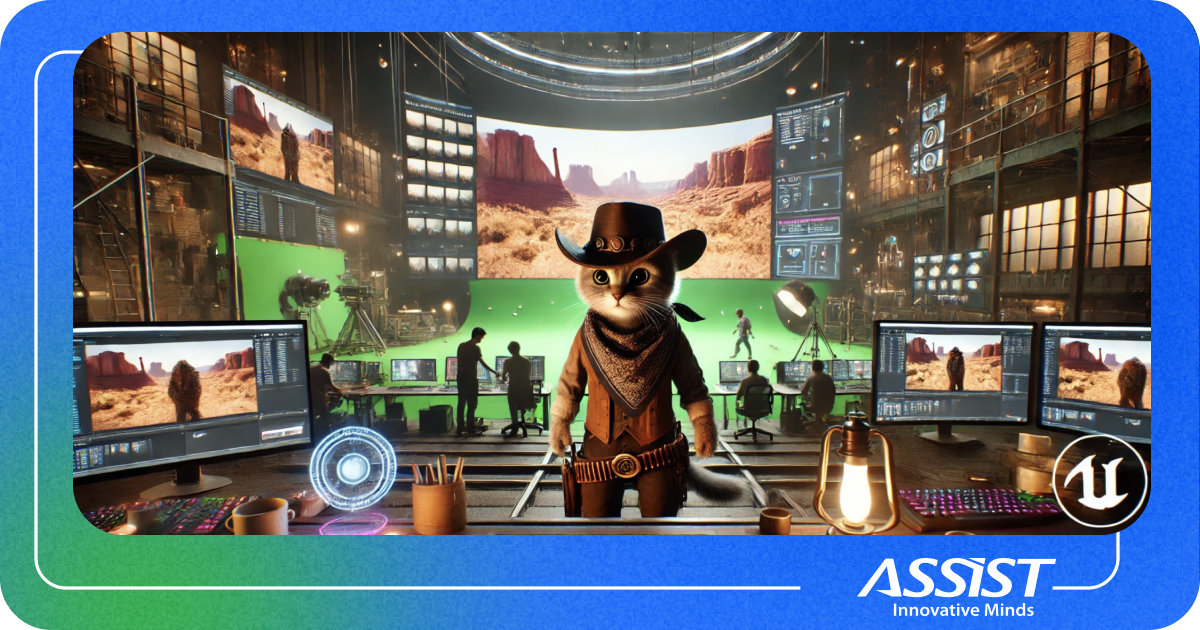Tech Insights from Innovative Minds: Agageldi Durdyyev, Front-end Developer
2️⃣ What new tech do you think will reshape the future of front-end work?
3️⃣ How do you sync with back-end developers for seamless integration?
4️⃣ What's your approach to keeping front-end code clean and scalable?
5️⃣ How do you feel about being part of our team?

In this month's edition of Tech Insights from Innovative Minds, we present Agageldi Durdyyev, or Agosh, as we know him. Originally from Turkmenistan, Agosh's Front-end Developer career at ASSIST Software is about ambition, adaptability, and curiosity for tech world.
Agosh arrived in Suceava in October 2018 on a scholarship, starting with a year-long preparatory program to learn Romanian. By the time he began his studies at the Faculty of Electrical Engineering and Computer Science (FIESC) at Ștefan cel Mare University of Suceava, his drive to learn new things had already set him apart. After graduating, in September 2023, we welcomed him to our team at ASSIST Software as a Front-end Developer.

During his university years, Agosh participated in numerous hackathons and competitions, including the 2022 edition of the ASSIST Tech Challenge, where his team secured first place. These experiences improved both his technical and soft skills. Throughout our interview, he said: "I'm passionate about what I do: software development. It's fun, fun, fun!". For us, it's impressive to see his passion reflected in his work!

What's even more impressive is Agosh's ability to communicate in six languages. He speaks fluently in Turkmen (his native language), English, Romanian, Turkish, and Russian, and he has conversational skills in French. Since he is part of our team, he has demonstrated fantastic communication skills and adaptability.
We recently had a great discussion about his career. Here's a sneak peek of the insights he shared with us about front-end development.
AI acts as a powerful assistant, helping me eliminate repetitive tasks, generate boilerplate code, and create mock data quickly and efficiently. However, using AI effectively requires skill and understanding - it's about knowing how to leverage it through techniques like prompt engineering and precise problem framing. AI is like an extension of my capabilities, a right hand that enhances productivity when used with expertise.
2️⃣ What new tech do you think will reshape the future of front-end work?
I believe technologies that enable personalized content and UI/UX, driven by machine learning algorithms, will significantly shape the future of front-end development. Delivering experiences customized to individual user preferences will redefine engagement and usability. Additionally, advancements in AR/VR frameworks like Three.js, Babylon.js, and ARKit will facilitate the way for immersive, interactive interfaces, transforming how users interact with applications.
3️⃣ How do you sync with back-end developers for seamless integration?
Seamless integration with back-end developers starts with clear communication and well-defined foundations. Before development begins, we ensure that APIs, data structures, and project requirements are thoroughly planned and agreed upon, alongside mapping out the application's flow. Establishing strong project fundamentals and sticking to shared rules creates a stable groundwork, making it easier to build upon and maintain alignment. Documentation plays an important role in this process. Keeping documentation up to date ensures that everyone on the team is on the same page and can quickly understand the current state of the project. Regular check-ins and collaborative tools like Swagger for API design or Postman for testing further enhance synchronization and help prevent integration issues.
4️⃣ What's your approach to keeping front-end code clean and scalable?
My approach to keeping front-end code clean and scalable is based on well-structured component architecture. I prioritize breaking functionality into small logical pieces and maintaining a clear separation of concerns - styles, constants, and utilities are all managed separately for better organization and reusability. I use tools like Prettier and ESLint to ensure the code is consistently formatted and aligns with best practices, improving readability and maintainability. Meaningful names and consistent naming patterns are key for variables and components across the project. Lastly, writing tests is essential to ensure scalability and reliability, allowing the codebase to grow confidently while catching bugs early.
5️⃣ How do you feel about being part of our team?
I'm deeply inspired to be part of the team and feel fulfilled knowing that my work can have a positive impact - whether through the code I write, the applications we build, or the experience of even a single user. I value the opportunity to learn something new every day, and while the work can be challenging, I thrive in such an environment. I also enjoy sharing knowledge and collaborating with teammates, contributing to innovation, and driving meaningful results together.
Thank you for reaching the end of this interview with Agosh! Stay tuned for the next edition of Tech Insights from Innovative Minds, where we'll bring you more stories from the talented people at ASSIST Software.





